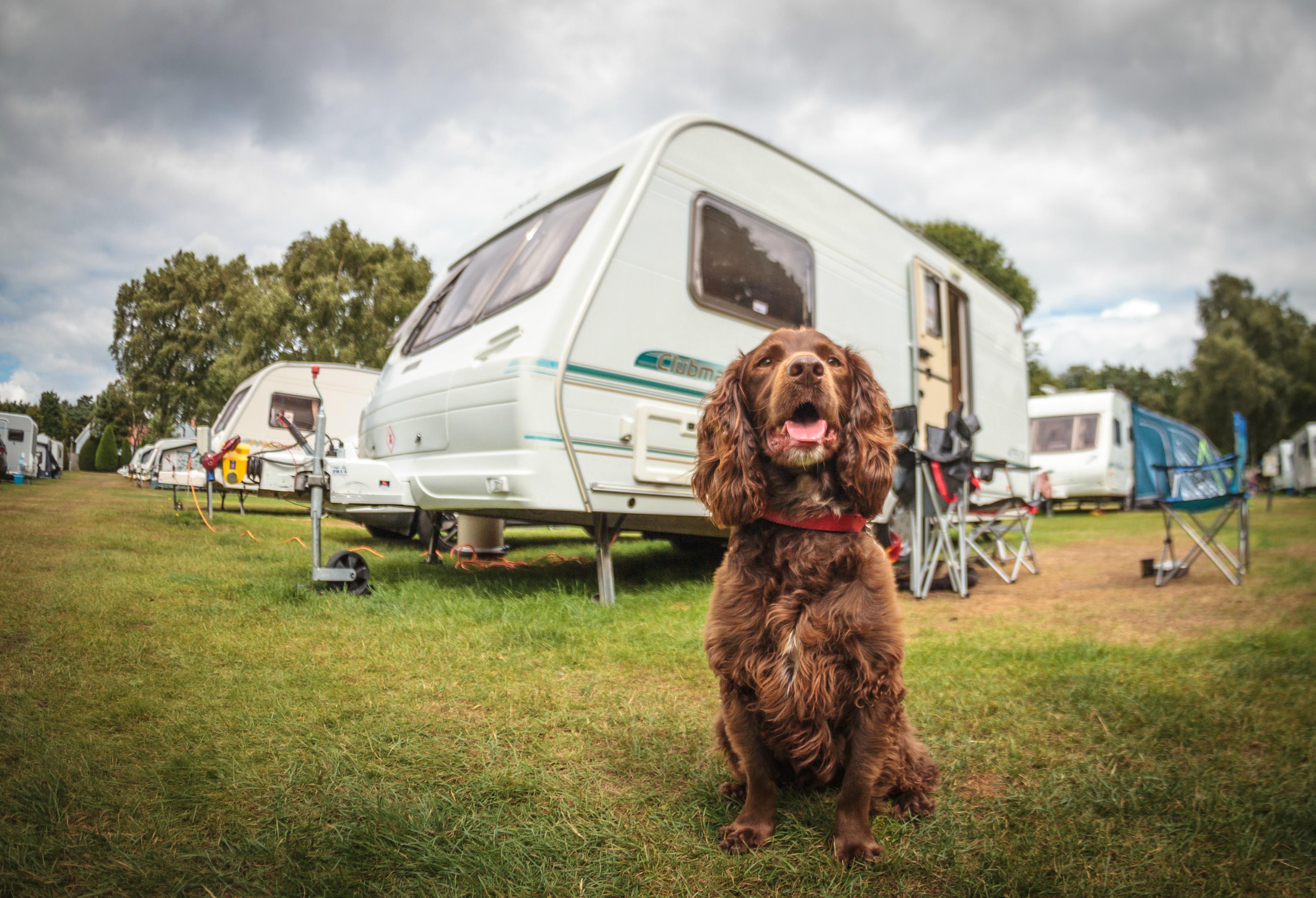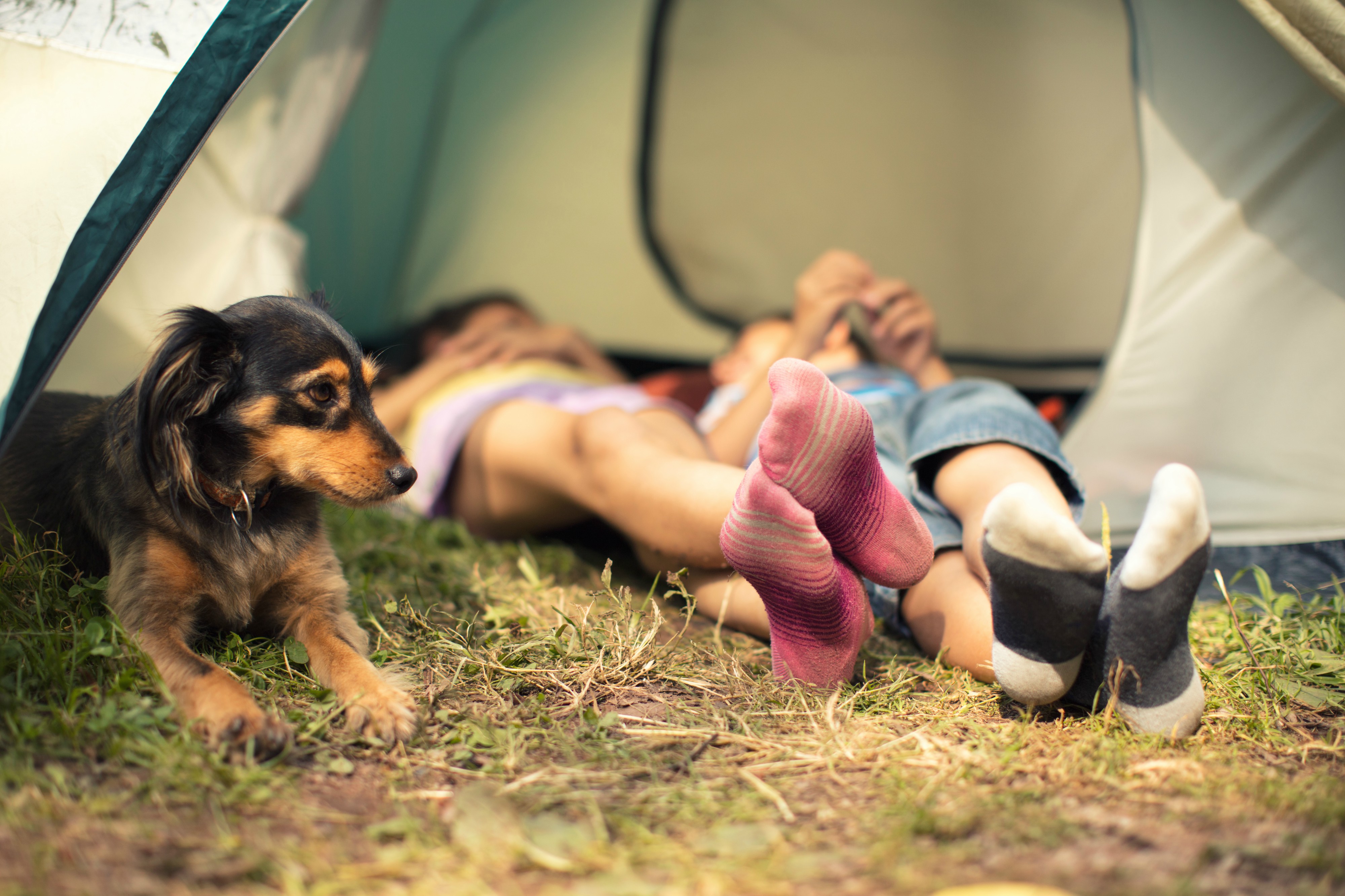Travelling with dogs: top tips for taking your dog on holiday

As many foreign holiday plans have been postponed, or cancelled, most of us are opting to take a break in the UK instead - which will make it much easier to bring along our four-legged friends.
After bonding with our canine companions throughout lockdown, it seems we’re not happy about leaving them behind during our holiday- not only will we miss them, they may also sufer with pet separation anxiety. Airbnb has seen that 'pets allowed' has consistently been in the top five amenity searches for British users for the last four months.
With careful planning, it’s easier than you think to bring them along and be part of the fun. Having said that, in some cases, travelling and being away from home can be just as stressful for your dog as it can be for humans. Make a judgement call as to whether it’s better for them to be left while you’re away, either with someone you trust or at dog boarding – meaning less stress for them, and for you.
The experts at grain free dog food brand Canagan have created a handy guide packed with tips and checklists to help you plan a fantastic staycation for you and your dog, with as little stress as possible:
Planning your trip
- Contact the venue with any concerns and questions in advance - such as where will your dog sleep? Are they allowed in your accommodation with you? Does the venue have washing facilities? Is it secure?
- Plan to keep your dog’s routine similar to their one at home, and make sure they’ll have space to relax. While they’ll be getting plenty of exercise on holiday, it’s also important they have room to rest, settle down and get familiar with their new surroundings
- Check the weather forecast in advance and prepare to protect your dog in hot weather.
- Look up dog-friendly walks, pubs, parks and beaches nearby. Your accommodation provider is sure to have a list of recommendations too. Look at reviews before you go, or the accommodation guest book when you get there, as there may be some tried and tested gems in there
- Get the contact details of a local vet
- Make sure their worming and flea treatments are up to date, especially if they’re likely to be around other dogs
- It’s a legal requirement to have your dog micro-chipped. Before you go away, ensure the details on the system are up to date
- Do you currently have insurance in place for your dog? It’s worth ensuring your policy includes things like injury, accidents and illness before you leave.
Getty

What to pack for your dog
- Collar and lead. Make sure their collar has identification and your phone number on it
- A collapsible food and water bowl if you’re planning on day trips like hikes
- A dedicated water bottle for hygienic topping up on the go
- Their bed and blanket, if they have one, to take the smell of home with them
- Treats
- Their favourite chew toys and play toys for walks like balls and a flinger
- At least two dog towels. Maybe more if your trip is longer
- A first aid kit. Including bandages, gauze, tape, antibiotic ointment, wet wipes, towel or blanket, vaccination card and emergency phone numbers
- Any medication your dog is taking, ensuring you have enough for the whole trip. Speak to your vet in advance if you’ll need more
- Waste bags, waste bags and more waste bags

Travelling with your dog
- Keep them secure whilst travelling in the car. The law says you must “suitably restrain” them. This is for their own good as well as yours; they’re safe if you need to stop suddenly and it keeps them from roaming around and distracting you (which in turn can invalidate your insurance if you have an accident). A harness, a guard or a travelling crate are all good ways to keep them safe. A crate can also double up as a secure place to sleep at your accommodation
- If you have a long car journey ahead of you, best to give your dog that little bit more exercise a few days leading up to it then, if time allows, a long walk right before the journey
- Bring ice cubes for the journey and offer them one every 30 minutes or so to keep them hydrated
- Take a break and let them stretch their legs somewhere safe every few hours. Offer them a drink and the chance to have a wee break. Don’t stop too often though, or they won’t get the chance to settle down and relax
- Tempting though it may be, don’t allow your dog to hang its head out of the window as you’re driving!
Parenting advice, hot topics, best buys and family finance tips delivered straight to your inbox.